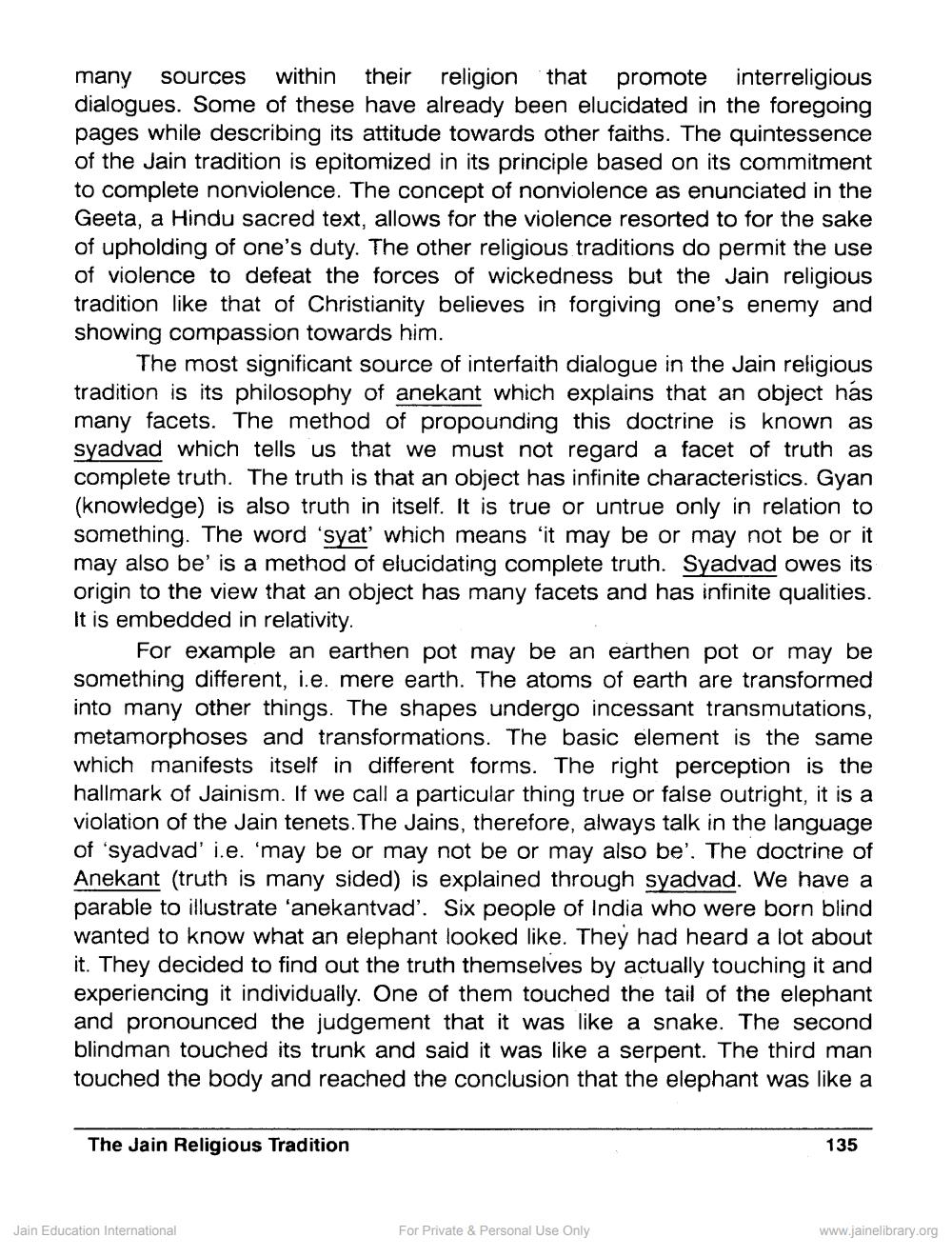Book Title: Jain Religious Traditon Author(s): S L Gandhi Publisher: Z_Vijyanandsuri_Swargarohan_Shatabdi_Granth_012023.pdf View full book textPage 3
________________ many sources within their religion that promote interreligious dialogues. Some of these have already been elucidated in the foregoing pages while describing its attitude towards other faiths. The quintessence of the Jain tradition is epitomized in its principle based on its commitment to complete nonviolence. The concept of nonviolence as enunciated in the Geeta, a Hindu sacred text, allows for the violence resorted to for the sake of upholding of one's duty. The other religious traditions do permit the use of violence to defeat the forces of wickedness but the Jain religious tradition like that of Christianity believes in forgiving one's enemy and showing compassion towards him. The most significant source of interfaith dialogue in the Jain religious tradition is its philosophy of anekant which explains that an object has many facets. The method of propounding this doctrine is known as syadvad which tells us that we must not regard a facet of truth as complete truth. The truth is that an object has infinite characteristics. Gyan (knowledge) is also truth in itself. It is true or untrue only in relation to something. The word 'syat' which means it may be or may not be or it may also be' is a method of elucidating complete truth. Syadvad owes its origin to the view that an object has many facets and has infinite qualities. It is embedded in relativity. For example an earthen pot may be an earthen pot or may be something different, i.e. mere earth. The atoms of earth are transformed into many other things. The shapes undergo incessant transmutations, metamorphoses and transformations. The basic element is the same which manifests itself in different forms. The right perception is the hallmark of Jainism. If we call a particular thing true or false outright, it is a violation of the Jain tenets. The Jains, therefore, always talk in the language of 'syadvad' i.e. 'may be or may not be or may also be'. The doctrine of Anekant (truth is many sided) is explained through syadvad. We have a parable to illustrate 'anekantvad'. Six people of India who were born blind wanted to know what an elephant looked like. They had heard a lot about it. They decided to find out the truth themselves by actually touching it and experiencing it individually. One of them touched the tail of the elephant and pronounced the judgement that it was like a snake. The second blindman touched its trunk and said it was like a serpent. The third man touched the body and reached the conclusion that the elephant was like a The Jain Religious Tradition 135 Jain Education International For Private & Personal Use Only www.jainelibrary.orgPage Navigation
1 2 3 4 5 6 7 8
